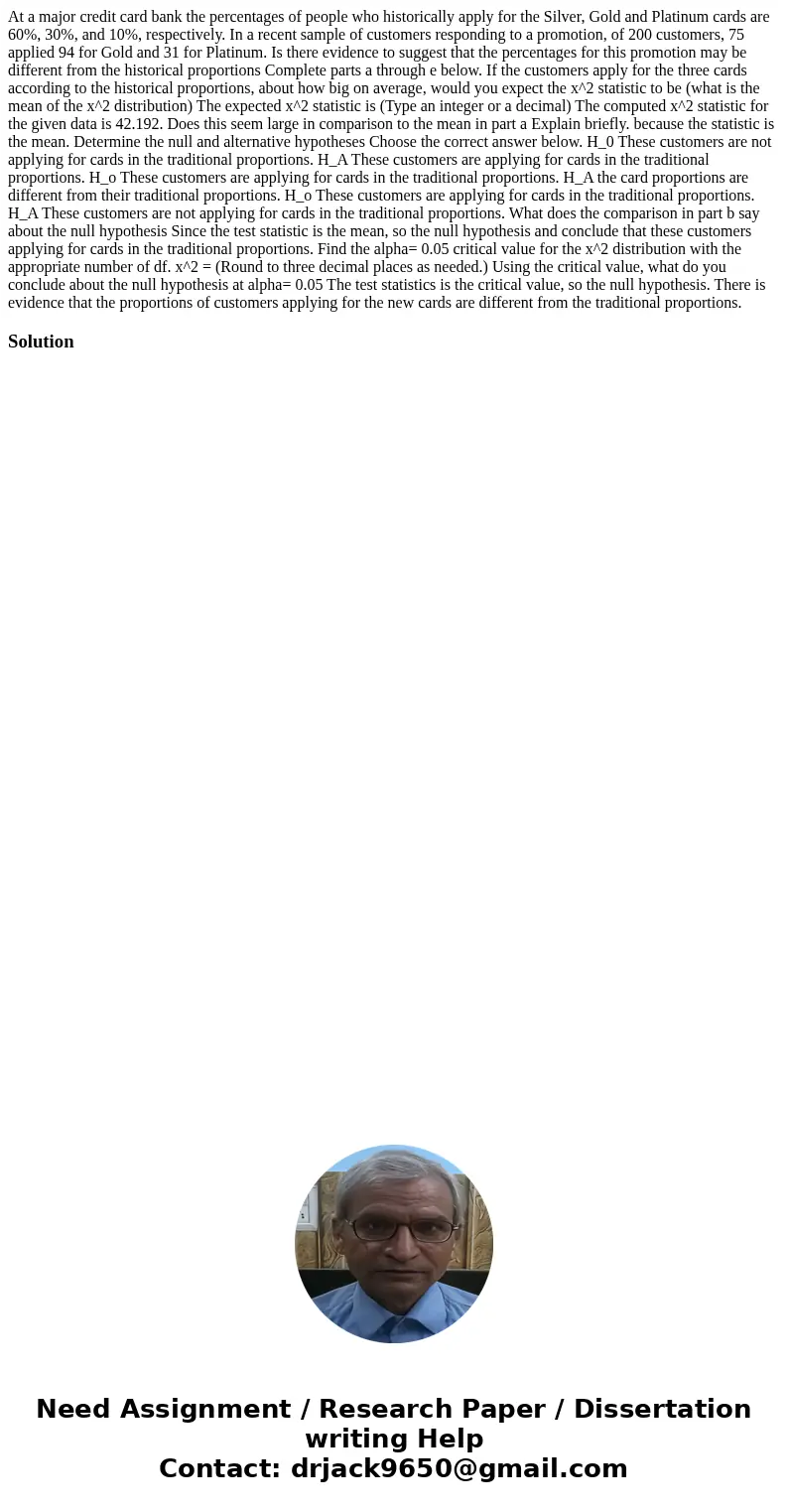At a major credit card bank the percentages of people who hi
At a major credit card bank the percentages of people who historically apply for the Silver, Gold and Platinum cards are 60%, 30%, and 10%, respectively. In a recent sample of customers responding to a promotion, of 200 customers, 75 applied 94 for Gold and 31 for Platinum. Is there evidence to suggest that the percentages for this promotion may be different from the historical proportions Complete parts a through e below. If the customers apply for the three cards according to the historical proportions, about how big on average, would you expect the x^2 statistic to be (what is the mean of the x^2 distribution) The expected x^2 statistic is (Type an integer or a decimal) The computed x^2 statistic for the given data is 42.192. Does this seem large in comparison to the mean in part a Explain briefly. because the statistic is the mean. Determine the null and alternative hypotheses Choose the correct answer below. H_0 These customers are not applying for cards in the traditional proportions. H_A These customers are applying for cards in the traditional proportions. H_o These customers are applying for cards in the traditional proportions. H_A the card proportions are different from their traditional proportions. H_o These customers are applying for cards in the traditional proportions. H_A These customers are not applying for cards in the traditional proportions. What does the comparison in part b say about the null hypothesis Since the test statistic is the mean, so the null hypothesis and conclude that these customers applying for cards in the traditional proportions. Find the alpha= 0.05 critical value for the x^2 distribution with the appropriate number of df. x^2 = (Round to three decimal places as needed.) Using the critical value, what do you conclude about the null hypothesis at alpha= 0.05 The test statistics is the critical value, so the null hypothesis. There is evidence that the proportions of customers applying for the new cards are different from the traditional proportions.
Solution

 Homework Sourse
Homework Sourse